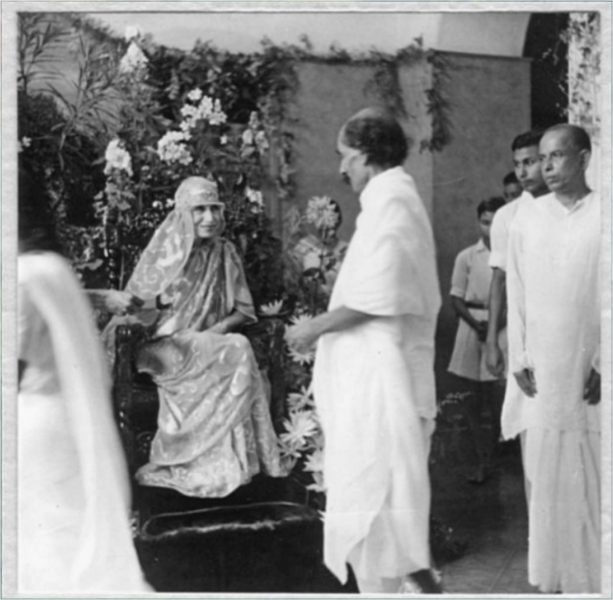NOLINI-DA
Madhav P Pandit
Speaking of Maheshwari, Sri Aurobindo writes: “To the wise she gives a greater and more luminous wisdom; those that have vision she admits to her counsels.”
Nolini Kanta Gupta was perhaps the first of the few whom the Mother so admitted to her counsels. And no wonder. Right from the first decade of the century he had been not only associated with Sri Aurobindo but had come close to him in several ways. Neither Sri Aurobindo nor Nolini was demonstrative but a close bond grew up between the two. Sri Aurobindo taught him French, Latin, Greek, in a direct way. Nolini entered into Sri Aurobindo’s being via Mind and became his mānasa-putra. Whenever an article had to be written, the first person Sri Aurobindo thought of was Nolini. Whether it was the Bengali Dharma or later the Standard Bearer of Chandernagore, Sri Aurobindo’s stand-by was Nolini. Naturally much later, when it was decided to start the Advent Quarterly in 1943 to expound the Master’s Vision of the Future, Nolini was the obvious choice for its editorship. During all these decades he set up a high standard not only in his editorial writings but also in the selection of its contents. It will be our endeavour to uphold his lofty values and follow his pattern as far as possible.
The Mother had always a special regard for Nolini’s judgment in these matters. She never allowed a single line of her writings to be published in the Bulletin unless Nolini approved. It was her express direction that no writing of hers was to go out unless it passed through Nolini’s hands. And Nolini was very conscious of this trust of Mother’s in him. He thought twice and thrice before suggesting an emendation. For the Mother being used to French construction, her English expression would at times need slight alteration. But Nolini was hesitant as a rule to change so much as a comma. It was an education for persons like me to watch their interaction. For it was not only in literary matters that Mother depended upon Nolini. The areas where she consulted him, waited for his reactions, were varied. I noted that he never answered her instantly; he waited for a few seconds before replying.
They had such a close relation that he could easily anticipate her requirements. It was touching to see him offer his muslin upper-cloth to her for wiping her hands after she arranged flowers in a vase and turned for a napkin to dry her fingers. There was such deep harmony between them that she did not at all need to speak to him in words; a mere gesture was enough. She — and Sri Aurobindo too — always appreciated his cool and they refer to it on more occasions than one. Both of them had an eye to his personal well-being. It was the Mother who designed the famous skull-cap of Nolini. Sri Aurobindo would reminisce about Nolini’s bald head and his thinking of a possible remedy for it!
Nolini was a silent polymath. His interests ranged over a variety of subjects: philosophy, psychology, poetry, aesthetics, languages in their deeper bearings, Veda, Upanishad, Epics of different cultures. And he was a renowned footballer, famed as Roy in Pondicherry of those days. He had almost a passion for athletics, and would not miss a single evening of our physical culture sessions. He was perhaps the most reticent person I have met and his very economy of speech was an asset to the Mother in the Ashram work which she handled through him and Amrita for long.
But on that account he was never far from us. His humanism was most palpable in his dealings with children. Of this let the children speak.




About Savitri | B1C1-09 Advent of the Divine Mother (p.4)